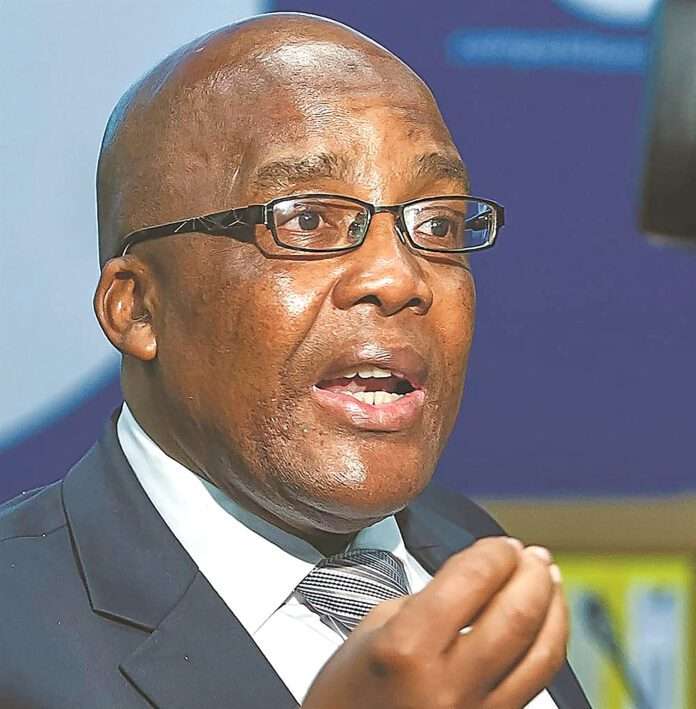The government has unveiled plans to replace outdated border management systems through a public-private partnership to ensure security in ports of entry.
Home Affairs Minister Aaron Motsoaledi held a media briefing on Wednesday to explain its request for proposals regarding the anticipated ports of entry projects.
This is to achieve a massive push to introduce cutting-edge infrastructure and technology at border gates and to end the porous nature of ports of entry.
The request for proposals for the multibillion-rand ports of entry projects was issued on Sunday and is available on the department’s website.
According to Motsoaledi, the initiative will target Beitbridge-Zimbabwe, Lebombo-Mozambique, Maseru Bridge-Lesotho, and Ficksburg-Lesotho.
It will also target Kopfontein-Botswana and Oshoek-Swaziland.
It is anticipated that the redeveloped ports of entry will result in efficient cross-border management of movement of people, goods, and services.
This will also lead to enhanced administration of persons entering and exiting the coutnry, improved regional economic integration, and increased support for African Continental Free Trade Area.
Other improvements will include improved revenue collection and addressing revenue leaks caused by the illegal movement of goods and illicit financial flows.
The improvements will also lead to protection of local industry from harmful imports and exports, and effective management of migration to reduce illegal migration, he said.
“We are here to add another layer to the country’s efforts to make our borders safer, less porous, and more importantly, very efficient in facilitation and easing of trade.
“The six ports of entry projects will cover the full infrastructure development of each designated port of entry and the provision of the required services to ensure a coherent and coordinated support of the institutional functions of all organs of state present at the ports of entry,” said Motsoaledi.
Motsoaledi stated that construction will be conducted in phases, so that ongoing operations at each of the designated ports of entry are not interrupted.
During construction, it is anticipated that about 38 000 jobs will be created in and around the six designated ports of entry.
“When I delivered my speech at the budget vote on 17 May, I announced my gratitude at the approval granted by Finance Minister, Mr Enoch Godongwana, for the Department of Home Affairs to issue the request for proposal to the market for the redesigning and redevelopment of our top six busiest ports of entry.
“If there is one thing you need to take away from this briefing, it is that the government is committed to put the latest infrastructure and relevant technology in its effort to modernise and upgrade our ports to be on par with the global best practices on border management.”
The minister’s A-team includes officials from his department, the Border Management Authority, the Presidency’s Infrastructure SA, National Treasury, and SA Revenue Service.
It also includes the Development Bank of Southern Africa’s infrastructure fund, and transactional advisors, Bowmans and Ernst & Young.
Since South Africa’s democratic transition in 1994, the number of individuals moving between South Africa and other countries in the region has increased, said Motsoaledi.
As a result of mining companies in North West, Limpopo, and Mpumalanga deciding to use the Maputo port for their exports instead of the Richards Bay Harbour in Durban, regional and international trade volumes have increased.
He said: “South Africa’s ports of entry were designed during the apartheid era with the primary objective of tightened security while neglecting the effective facilitation of
regional and international trade.
“It is not an over-exaggeration to state that when you visit our land ports of entry, between us and our SA Development Community neighbours, the South African side of the border looks like informal settlements while the other side looks like Sandton.”
Motsoaledi stated that South Africa has 72 entry points, 53 of which are land-based, 11 international airports, and eight sea ports.
“Of the 53 land ports of entry, we have earmarked six of our largest and busiest,
by traffic volume, for redevelopment in order to address the congestion.
“The outcome of the redevelopment will be used as a blueprint in the long term for all other South Africa’s land ports of entry.
“The primary intention is to ensure the realisation of regional economic integration in the SADC region while facilitating the realisation of the African Continental Free Trade Area.”
Motsoaledi cautioned that although the government is partnering with the private sector, the initiatives must be both affordable and effective.
Dr Mike Masiapata, commissioner of the Border Management Authority, stated that its responsibility is to accept completed projects.
“We had to give the specifications of the requirements because we are the ones who will be using the infrastructure once it is actually developed.
“We should be able to facilitate the movements of persons and goods in and out of the republic,” said Masiapata.
Wandisile Mandlana from the transaction advisory firm Bowman Gilfillan said theirs is to ensure compliance.
“Our role in this overall project is to ensure that the project is bankable from a legal perspective and does deliver value for money to the country, and that it is procured in a manner that is transparent, competitive, cost-efficient, fair and equitable,” Mandlana said.
Follow @SundayWorldZA on Twitter and @sundayworldza on Instagram, or like our Facebook Page, Sunday World, by clicking here for the latest breaking news in South Africa.



